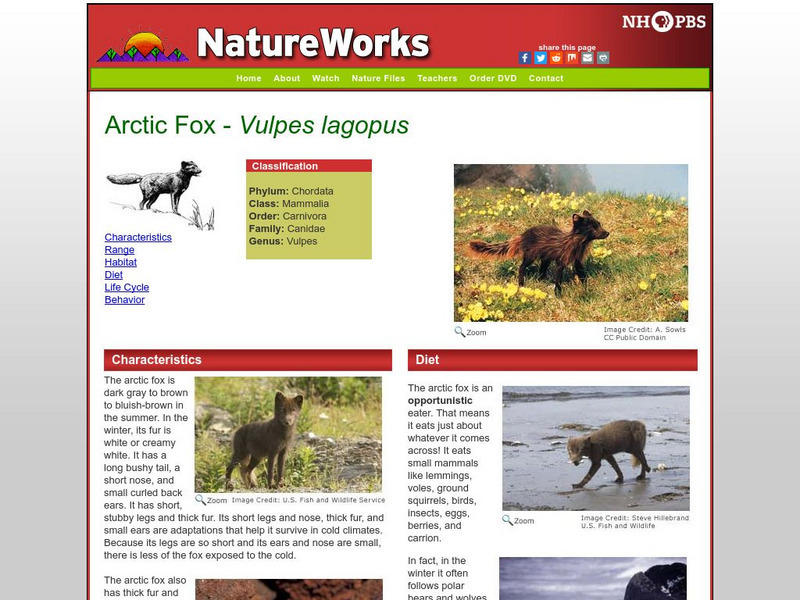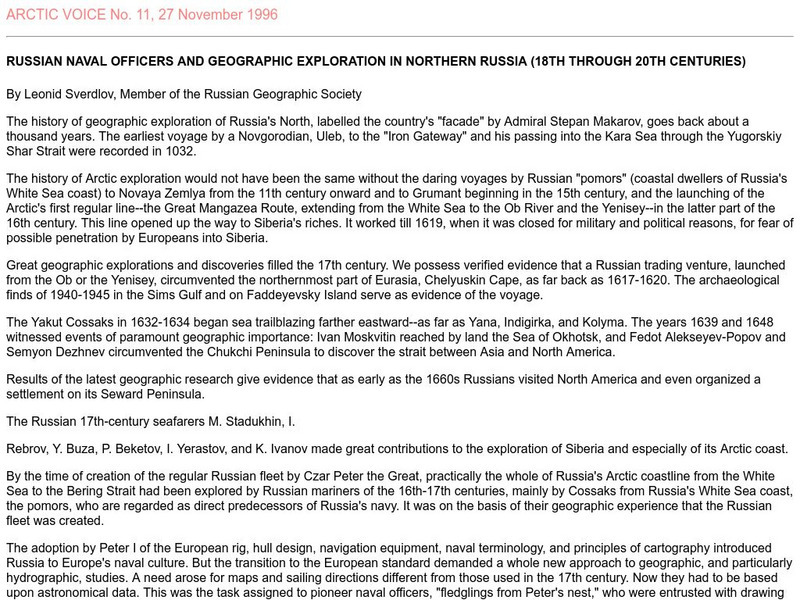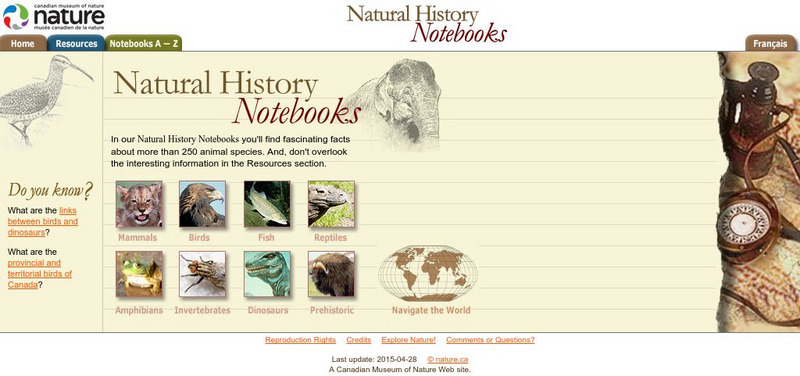Curated OER
CGC1P -- Unit 1 Lesson 2 Video Introduction
In this listening learning exercise, 5th graders fill-in the blanks and respond to questions. Students watch a video and fill-in the blanks and answer questions with information that they hear during the video.
Curated OER
Climate Change: What's Hot? What's Happening?
Students conduct a web-based project to analyze recent or on-going climate change research in the North. They are exposed to the application of science in current research on climate change.
Curated OER
Plants and Oxygen: Breathing
Second graders gain an understanding of how plants produce oxygen and that the oxygen we breathe comes from trees and plants. After a lecture/demo, 2nd graders discuss the ways plants produce oxygen and the detrimental effects of cutting...
Curated OER
Where Do All the Animals Live?
Students study animal habitats and make a poster showing two animals, two birds, and two reptiles in their habitats.
Curated OER
Maintaining Body Heat
Students observe and compare heat loss in different objects with surface-to-volume ratios. They transfer this comparison to the physical characteristics of animals in their environment. They focus on how whales maintain their body heat.
Curated OER
Turtle Adaptations
Students identify structural adaptations of different types of turtles, and compare and contrast adaptations of painted turtles, sea turtles, and desert tortoises using a chart.
Curated OER
"Global Relations"
Students explain the difference between each of three major ecosystems. They determine the flow of water in the St. Mary's River as it flows out of the river into the bay, and finally out into the Atlantic Ocean and identify where...
Curated OER
Love of Learning
Third graders discuss times when learning has been fun and when it hasn't. They imagine that the are going for a ride in an aeroplane. Students imagine that they are looking through the window at the land below, they see the uneven shape...
Curated OER
The Inuit Style of Film-making
Seventh graders examine the style of Inuit. In this Film lesson, 7th graders research the different ways to create a Hollywood film. Students read various articles on this style of art.
PBS
Nh Pbs: Nature Works: Arctic Fox
Learn more about the arctic fox through this clear and concise site. This resource features photos, characteristics, behavior information and more about this fascinating mammal.
Nature Canada
Nature Canada: Arctic Tern
Facts about the Arctic tern, a Canadian seabird, are given. While the population is large, there are concerns about the numbers being in decline.
Scholastic
Scholastic News: Re Creating the Arctic
Studying sea ice in the Arctic region is very difficult. Read how scientists are using an innovative technique of freezing seawater in a pool to study sea ice.
Other
Arctic Voice: Geographic Exploration in Northern Russia (18Th Through 20th C)
An interesting article about the exploration and mapping of the Russian Arctic and the men who were involved. The mapping process evolved over several centuries.
Ducksters
Ducksters: Geography for Kids: The Arctic and the North Pole
Learn about the North Pole and the Arctic on this website.
Curated OER
Cbc: Human Odyssey: A World of Extremes
Immerse yourself in the nomadic worlds of people who live in extreme environments. The Badjao are sea nomads in the Philippines who still live a hunter-gatherer existence but they do it on water. The Bushmen are desert nomads living in...
Nature Canada
Nature Canada: Brant
The brant is a small aquatic goose found in the Arctic and Alaska during its northern migration and as far south as Mexico and North Carolina on its southern migration. This is an information page about the brant.
Nature Canada
Nature Canada: Red Necked Phalarope
The red-necked phalarope is a shorebird that spends summers in the Arctic and northern Canada, and winters mainly south of the equator. They are found mostly in coastal waters but can also be seen in some inland waters. Facts about the...
Nature Canada
Nature Canada: Semipalmated Sandpiper
A fact sheet giving information about the semipalmated sandpiper, a shorebird that migrates between the Canadian Arctic and South America.
PBS
Pbs Nature: Penguins
Did you know that penguins can survive for more than 100 days without food or water? Discover more educational facts about these fascinating birds when you explore this site.
Curated OER
Arctic Warbler
Listen to the sounds of the warbler and delve into topics such as range, habitat, food, behavior and more on this thorough site.
Curated OER
Arctic Warbler
Listen to the sounds of the warbler and delve into topics such as range, habitat, food, behavior and more on this thorough site.
Canadian Museum of Nature
Canadian Museum of Nature: Natural History Notebooks
This site from the Canadian Museum of Nature, a natural history museum, provides short information blurbs and fun facts on over 240 different common animals categorized by type (mammals, fish, reptiles, invertebrates, amphibians,...
The Wild Classroom
The Wild Classroom: Biomes of the World: Polar Ice Caps Biome
Learn about the polar ice cap ecosystem. Find out about plants, animals, adaptations, and conservation efforts.




















